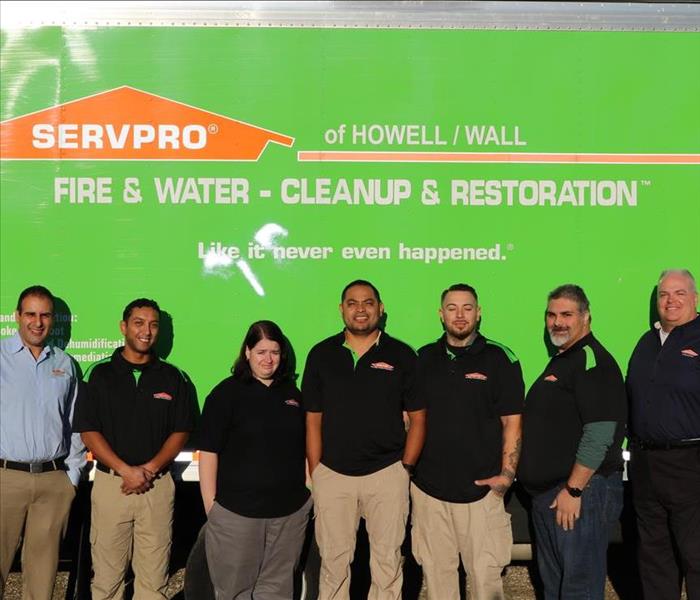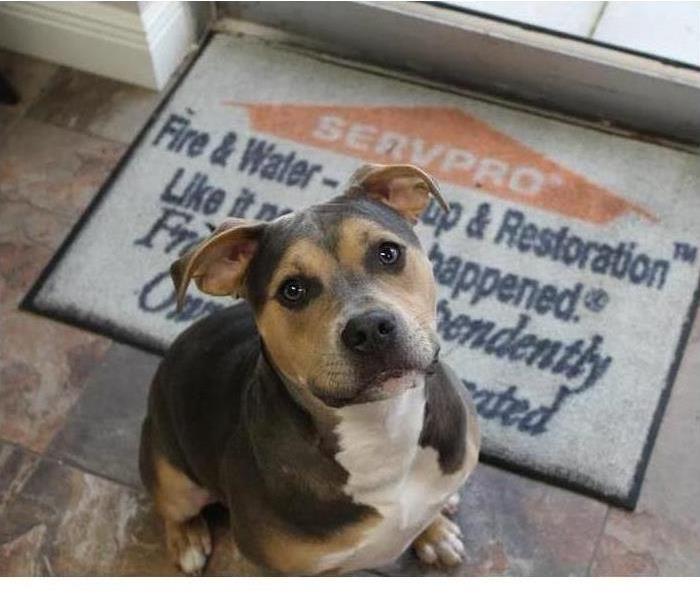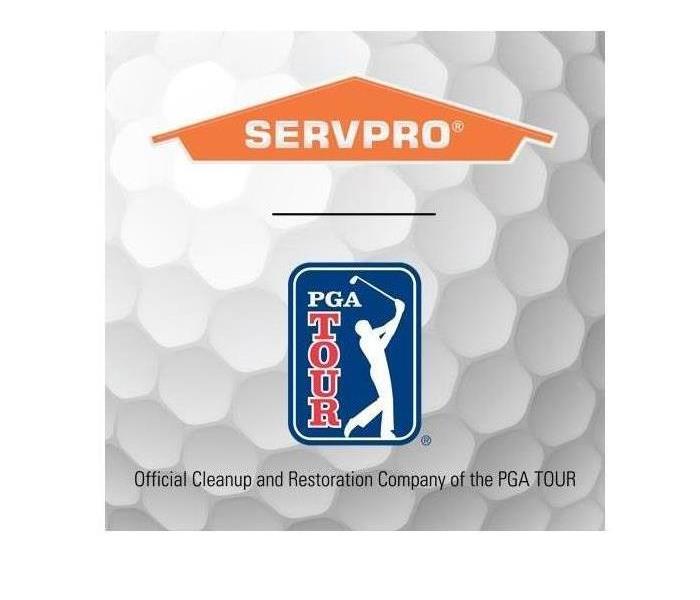Recent General Posts
Keys to a Safe Family Summer
7/5/2019 (Permalink)
The kids are out of school and it’s time for summer adventures and quality memories with family and friends. No one likes to think about the dangers of summertime activities, but it’s always a good idea to prepare in advance to avoid the kinds of issues that could arise.
Water Safety:
- Teach kids to swim. Formal swimming lessons can be an extremely important safety measure for children.
- Learn CPR. At least one parent or family member should be trained in CPR. It could save a loved ones life.
- Supervise children when they are in or around water. A watchful eye and quick action can make all the difference with water related accidents.
- Wear properly fitted life vests when traveling in boats or watercraft.
- Install proper fencing around pools.
Heat Safety:
- Never leave infants, children or pets in hot cars. Even if the windows are down.
- Outdoor activities should be planned at cooler times of day, including morning and evening hours.
- Dress children in light weight, light colored, loose fitting clothing.
- Know the symptoms of heat related issues and illness. Seek medical attention if concerns arise.
- Keep kids cool with showers, pools, baths and breaks when outdoors.
Sun Safety:
- Make sure that children are wearing sunscreen with at least an SPF of 15 at all times when they are outside in the sun.
- Cover up. Clothing can block harmful UV rays.
When spending time in the yard, make sure kids are using an effective insect repellent. Learn ways to make your yard a tick free zone. Or check children daily for ticks if they have been outside. Take simple steps to make sure that summer stays fun day and night.
If the unexpected happens call the pros at SERVPRO to help manage household issues. Everything from flooding and fires to carpet cleaning and deodorization. (732) 577-1010.
Understand our terms and lingo
2/5/2019 (Permalink)
SERVPRO of Howell/Wall is always "Here to Help". We know that jargon can be confusing so we usually try to break it down as easy as we can out in the field, but we know that our customers like to stay informed. Here are some common terms used in the field with their definition so you can understand better what is happening in your home or business.
Anti-Microbials: A substance, mechanism, or condition that inhibits the growth or existence of an organism.Commonly applied after a water damage to prevent mold from developing.
Fire Damage Recovery: The process of restoring and recovering property and belongings after a fire. The objectives include minimizing existing damage, damage mitigation, structure stabilization, soot & odor removal and reconstruction.
Fungi: The unicellular or multicellular eukaryotic/ DNA organisms embracing a large group of microflora including: molds, mildews, yeasts, mushrooms, rusts and smuts.
HVAC: Heating, ventilation and air conditioning.
HEPA Filter: High efficiency particulate air filter, a specialized filter capable of removing 99.7% of particles. Commonly used in mold or odor job sites. HEPA Vacuum or HEPA air scrubber.
Masking Agents: Designed to prevent or remove heightened awareness to odors by providing a fragrance, which is stronger and more pleasant to smell while the source of the odor is being eliminated.
Smoke Damage Removal: Neutralizing or removing smoke odors that linger after fires.
Smoke Particles: Smoke is composed of gases / sometimes aerosols, and airborne solids. Dry wood, natural fibers and paper all produce small non-smearing material. Plastic, foam, and rubber (polymers) produce large easily smeared residues.
IICRC Certified Firm
10/12/2018 (Permalink)
 Call us anytime..day and night, 7 days a week, 365 days a year.
Call us anytime..day and night, 7 days a week, 365 days a year.
SERVPRO of Howell/Wall is an IICRC firm. The Institute of Inspection, Cleaning and Restoration Certification (IICRC) creates the standards for the restoration industry and provides training and certification to restoration companies. IICRC Certified Firms have the right to display the IICRC Certified Logo.
IICRC Certified Firms must
Present accurate information to consumers and conduct business with honesty and integrity.
Require a technician on all jobs who has been formally trained and passed all required tests.
Require a continuing education program to keep technicians up-to-date on the latest changes in the industry.
Maintain liability insurance to protect all parties in the event of an accident.
Maintain a written complaint policy and agree to Better Business Bureau or similar arbitration to resolve disputes, and accept the conclusions and recommendations of arbitration.
The IICRC Develops The Standards For The Restoration Industry
IICRC has been the driving force in establishing the main industry standards and reference guides for professional carpet cleaning, water damage restoration and mold remediation.
These IICRC standards take years to develop and require the coordination of experts in the field: manufacturers, industry organizations, insurance professionals, training schools, contractors, and public health professionals.
Every five years, the standards are reviewed and updated. The water damage restoration field changes rapidly with advancements in technology and science, and therefore the standards must evolve to keep pace.
A Disaster Plan for your Pets
7/27/2018 (Permalink)
 Creating a disaster plan is essential to keeping your family members of all species safe!
Creating a disaster plan is essential to keeping your family members of all species safe!
Most people know they should have a disaster plan in place for their families, but if you are faced with a natural disaster, do you have a disaster plan for your pet? Storms, wildfires and floods happen around the world every day and affect thousands of people and their pets. That’s why everyone should have a plan, not only for yourself, but for your Fur Family. To help you plan for the unimaginable, here are our 9 essentials of disaster prepping for your pet:
- Proper ID. The most important thing you can do for your pet before a disaster occurs is to make sure they have proper ID. This means having a physical tag containing your current info on their collar which they wear at all times, and having them micro-chipped and registered in a national registry such as the free Found Animals Microchip Registry.
- Keep your pet’s vaccinations up to date to reduce their risk of disease and sickness. There are so many unknowns in a disaster. If you are evacuated, your pet may not be able to come with you to shelter and may be held in boarding with other animals whose health status is unknown. If your home is destroyed, your pet may be lost and living outside for a time and subjected to the elements, dirty water supply or worse. Be safe, not sorry, and vaccinate.
- Display a Pet Rescue Sticker. Make sure you have a pet rescue window decal in a place visible to rescue workers.
- Identify Pet-Friendly Emergency Shelters. Not all emergency shelters or hotels allow pets. Before a disaster hits, call your local emergency management office or animal shelter to see if there are places planned for people and pets to stay together in the event of an emergency. Research pet-friendly hotels away from typical disaster zones, or arrange to stay with family or friends outside of your area. Prepare a few options in a range of distances from your home in case of either local or region-wide emergencies.
- Assemble a Pet Emergency Kit. You can buy a compact kit that fits under your seat, a larger bag you can carry on your shoulder, a grab and go bucket with everything your pet could need and add pet-related items to your family’s existing emergency supplies. Your kit should include the following items:
Plan to have at least five days of food, water and portable bowls. Dry food should be in resealable plastic bags. If your pet eats wet food, make sure to buy easy open cans so you don’t need a can opener. Prepare a written feeding schedule.
- Medication and Medical Records
Keep an extra supply of your pet’s regular medication in a waterproof zip lock bag. Also include a copy of your pet’s vaccination record and microchip number.
For cats, include kitty litter and disposable litter boxes. For dogs, pack plastic waste bags and an extra leash and harness. Beds, blankets, toys and clothing are also useful to keep your pet calm and cozy in an emergency situation.
- Store Supplies for a Speedy Exit. Place all of your emergency supplies in a safe, dry, convenient place near your escape route in case you need to leave in a hurry. The safest way to transport a pet in an emergency or disaster is in a carrier or crate, so keep one close to your emergency kit. Frightened pets can be difficult to manage with only a leash and collar.
- When a Disaster Strikes, Don’t Hesitate; Evacuate. Not all disasters come with warning, but if they do, follow emergency response recommendations and evacuate as quickly as possible. Disasters are very stressful on both pets and people, and no one can predict how bad things will get. Don’t wait until the last minute to leave. Use your emergency plan as a tool to supplement first responder instructions.
- Leave with Your Pets. If the area is not safe for you, it’s not safe for your pets. It may not be possible to return for your pets, so take them with you from the start.
- If Your Pet Gets Lost, Check for Found Pet Alerts. If your pets are separated from you, check your cell phone and email for Found Pet Alerts. When a rescue worker finds your lost pet and starts an alert in the Found Animals Registry, you will be contacted via phone calls, text messages, and emails based on your pet’s microchip registrations. These alerts will provide information on your pet’s location. If you cannot access your phone or email, or are unable to retrieve your pets, your emergency contacts and vet will also be notified.
For more information about Pet Disaster Preparedness, please visit the following websites:
- Preparing your Pets for Emergencies,Federal Emergency Management Agency (FEMA)
- Make a Disaster Plan for Pets, Humane Society United States(HSUS)
- Disaster Preparedness, ASPCA
- Pets and Disaster Checklist, American Red Cross
- Saving the Whole Family Brochure, American Veterinary Medical Association
“Like It Never Even Happened” Call Us Today- (732)577-1010
Extending The Life Of A Candle
7/27/2018 (Permalink)
 Tips to extend the life of your candle for smell or survival.Extending The Life Of A Candle
Tips to extend the life of your candle for smell or survival.Extending The Life Of A Candle
We burn candles for a variety of reasons, whether for the aroma or to light the home due to a power outage. Did you know that you could actually assist them in burning longer?
Tip 1: Freeze your candle. Yes, put it in the freezer! By doing so, you are hardening the wax, which makes it melt more slowly and therefore last longer. It may not be feasible to store all of your candles in your freezer, so simply slip your next-up-to-burn candle into the freezer on the morning or night before you’re planning to light it.
Tip 2: After letting the candle burn long enough for a pool of wax to collect around the wick, blow out the flame. Then, quickly sprinkle table salt into the liquid wax. If necessary, use a toothpick to ensure that the salt actually mixes into the wax and doesn’t just sit on the surface. Then re-light the candle. Adding salt serves the same purpose as putting the candle in the freezer—it slows down the rate at which the wax melts, giving you a longer, more economical burn. What matters most is how long you let the candle burn the first time you light it. Try not to extinguish it until the pool of wax has extended across the diameter of the candle. Blow it out too soon, and you may cause the candle to leave excess wax; if it doesn’t melt on the first lighting, the dry, hard wax around the outside edge will almost never burn.
Tip 3: It can also be helpful to keep the candle wick trimmed to about a quarter inch in length, because longer wicks tend to burn faster. Leftover wax is a sign that the candle didn’t burn to its full potential. To get the most bang for your buck, make sure that the candle burns both evenly and completely. Finally, remember not to leave the candle near a door or window or in any similarly drafty spot; not only is such a location unsafe, but it can also result in uneven burning.
Summer Water Saving Tips
7/8/2018 (Permalink)
Every state is experiencing the effects of drought, and saving water is on everyone’s mind these days. We waste a lot of water; our showers are too long, and we are often obsessed with an emerald green lawn. We need to change the way we handle and view water and leave behind the outdated and inefficient water management systems of the past.
Here are some tips that will help you save water this summer. Your water bill will be reduced, and you can save yourself some time into the bargain as well as doing some good for the Earth.
- Water your yard in the cool parts of the day. Water evaporates more quickly when it’s hot, so run your irrigation system while it’s most likely to stay with your lawn. Make sure you are not watering your sidewalk or your driveway, too. A drip system works quite well in this respect. Replacing your thirsty lawn with a drought tolerant garden would be a great way to save water, and it won’t have to be mowed every week!
- Check for leaky toilets. Put a few drops of food coloring into the tank. If the color shows up in the bowl, your tank is leaking, and could be wasting up to 100 gallons of water a day!
- Take shorter showers. Trimming just two minutes off of your showers can save up to 1700 gallons of water a year. One way to do this is to turn off the shower while you shave or soap up. Install water-efficient shower heads, toilets, and faucets for a savings of thousands of gallons per year as well.
- Cover the pool. Make sure the water in your pool stays there by covering it when you are not using it. This will prevent water loss by evaporation.
- Use a car wash. Washing your car by hand can easily use 100 gallons of water, and takes a lot of time and effort, as well. Commercial car washes average 40 gallons or less!
- Trap rain water. Collect the water from summer rain storms by getting a water barrel. You can reuse this water for your garden. Green roofs, rain gardens, and other water-saving techniques are called green infrastructure and go a long way towards saving this most precious resource. More and more landowners and city governments are choosing to invest in these and other innovative strategies as ways to save water, reduce pollution, and save millions, and even billions, in costs for new water tanks, tunnels, and other traditional water infrastructures.
SERVPRO of Howell/Wall is here to help you with all your home and business needs. Call us today at (732)577-1010, or visit our website: SERVPRO of Howell/Wall
SERVPRO and the PGA TOUR partner together to bring you FANTASY GOLF
5/24/2017 (Permalink)
 SERVPRO and PGA TOUR Partnership
SERVPRO and PGA TOUR Partnership
Are you into Fantasy Sports? Do you love golf?
We have a game for you.
SERVPRO and PGATOUR.COM have partnered together to announce two new fantasy golf games, PGA TOUR Fantasy One & Done and PGA TOUR Champions One & Done. Both games are free to play and can be found in both the Apple iTunes Store and Android Play Store or on the web at www.fantasygolf.pgatour.com.
The games are simple and fun to play. Players simply pick one golfer each week and accumulate the most points in the FexExCup or Charles Schwab Cup Cup, over the course of the season.
The top in finisher in the PGA TOUR game will win a new set of golf clubs, while the top prize for the PGA TOUR Champions game will win a trip for two to the Charles Schwab Cup Championship at Phoenix County Club in Phoenix, AZ in November.
Again these games are free and fun…Check it out.
Home Maintenance Checklist to be Ready for Spring
3/21/2017 (Permalink)
 Spring is Here!
Spring is Here!
Punxsutawney Phil said we would have six more weeks of winter and he was right. But winter has past and now its time for spring. Here is a checklist of things to check on your home this spring from your friends at SERVPRO of Howell/Wall
1: Examine the shingles on your roof. Now that winter is gone, you want to check to make sure that you haven’t been damaged or lost. Any shingles that cracked, buckled or loose need to be replaced in order to keep your house dry through April showers.
2: While your up there, examine your chimney, if you have one, for damage. Also, its not a bad idea to get a chimney sweep to examine and clean the flue.
3: Check your wood, including the trim around windows, doors, railings and decks with th a screwdriver to probe for trouble spots. Be sure you make your repairs before the spring storms do more damage to your wood.
4: Check your gutters to make sure they are still secure or leaking. Also, make sure gutters are unclogged, free of debris, and that they are not draining into the foundation.
5: Inspect your concrete slabs for cracks. If you have cracks, fill them silicone caulk or concrete crack filler, then, when the weather cooperates, power wash and seal the concrete.
6: Time to check the outside faucets that may have been damaged in the freezing temps of winter. Turn on your faucet and try and stop the flow of water with your thumb. If you can stop the water, that is an indication the pipes inside the home are damaged and need to be replaced.
7: Have your outside AC unit serviced by a qualified HVAC contractor. Have your unit cleaned annual to keep your system running efficiently and at peak performance.
Thanks for reading and enjoy your Spring.
Your Friends at SERVPRO Howell/Wall
Call us anytime, we are available 24/7, 365 days a year at 732-577-1010
For more tips, like us on Facebook: www.facebook.com/SERVPROhowellwall





 24/7 Emergency Service
24/7 Emergency Service





